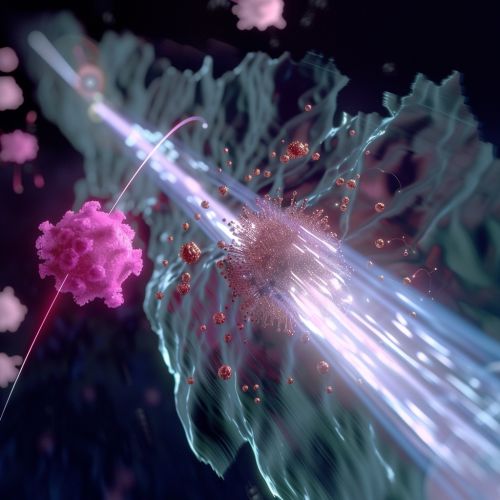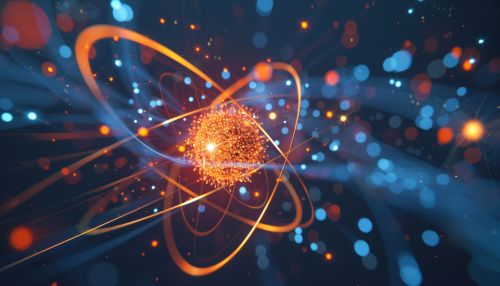Weak nuclear force
Introduction
The weak nuclear force, also known as the weak interaction or weak force, is one of the four fundamental forces of nature. It is responsible for the radioactive decay of subatomic particles and plays an essential role in nuclear fission. The weak force is a type of fundamental interaction that occurs between subatomic particles, which are the smallest units of matter.


Fundamental Nature
The weak nuclear force is unique among the fundamental forces in that it does not conserve parity, which is the symmetry of physical laws under a reflection. This property is known as parity violation. The weak force is also the only known interaction that can change one type of quark into another, a process known as flavor change.
History
The concept of the weak nuclear force was first proposed in the early 20th century by physicists trying to understand beta decay, a type of radioactive decay in which a neutron transforms into a proton and emits an electron and a neutrino. Enrico Fermi, an Italian physicist, was the first to develop a successful theory of the weak force, known as Fermi's interaction, in 1933.
Weak Force in Particle Physics
In particle physics, the weak nuclear force is mediated by the exchange of W and Z bosons, which are massive particles. These bosons are the force carriers of the weak interaction, analogous to the photon in the electromagnetic force. The exchange of these bosons causes a change in the type of particle, a process known as weak decay.
Weak Force and the Standard Model
The weak nuclear force is an integral part of the Standard Model of particle physics, a theory that describes three of the four known fundamental forces (the electromagnetic force, the strong nuclear force, and the weak nuclear force), as well as classifying all known elementary particles. The weak force, along with the electromagnetic force, forms a unified theory known as the electroweak theory, which was proposed by Sheldon Glashow, Abdus Salam, and Steven Weinberg in the 1960s.
Weak Force and the Universe
The weak nuclear force plays a crucial role in the processes that power the Sun and other stars. During stellar nucleosynthesis, the weak interaction is responsible for the conversion of protons into neutrons, a process that allows for the formation of heavier elements. The weak force is also responsible for the decay of certain types of particles, which results in the release of energy in the form of light and heat.
